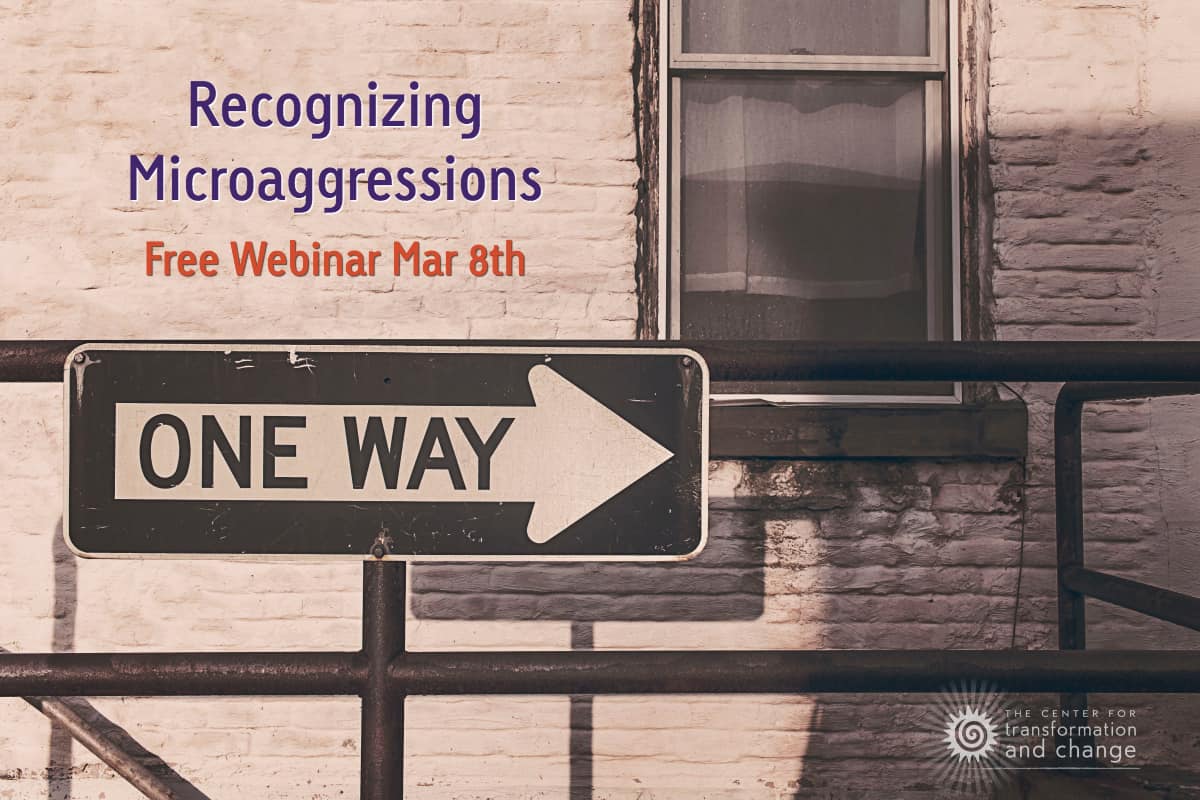Part 4: Infusing Diversity Into Everything We Do
“If you want to go fast, go alone; If you want to go far, go together.” African Proverb
Earlier in my career as a college administrator and an organizational consultant I used to teach a wide variety of courses on various interpersonal skills (leadership development, team building, communication skills, conflict management, customer service, stress management, time management, etc.) with little or no direct reference to the issues of inclusion and diversity. As I look back I am rather appalled since today I cannot imagine teaching these topics in corporations, human service agencies, or at colleges and universities without some attention to issues of diversity and inclusion. To be fair, the societal context and climate were somewhat different 20+ years ago, and yet I still believe I was remiss in my work.
In this post I explore the 4th layer of the cake to infuse diversity/inclusion into educational sessions and courses ~ weaving diversity into the CONTENT of the learning. (Note: Other 3 posts are below this one.) For example, a course on effective leadership provides a significant opportunity to help participants develop their competencies in the following skill sets:
- Lead and manage diverse teams
- Attract, develop, and retain a culturally competent, diverse employee group
- Prepare employees/students to live and work in a global environment
Similarly, a training session on customer service needs to include a strong emphasis on developing emerging and niche markets and providing excellent customer service to the full breadth of clients across group memberships. In most every course involving any type of interpersonal skill building, facilitators can infuse diversity/inclusion by designing activities to explore the following:
- What are the breadth of group memberships among the people you serve and with whom you interact?
- What are some of the common, societal attitudes and biases that still exist towards people from these various group memberships?
- How might these attitudes/biases impact how people treat others: either with unearned privilege and deference? or undeserved negative, exclusionary treatment? Discuss specific examples they have observed or experienced.
- Which of these attitudes/biases might you still be working to release and unlearn?
- What are ways to interrupt these stereotypes when we recognize we are treating people based on our assumptions and attitudes?
Facilitators can reinforce issues of diversity/inclusion with key “generic” phrases, including:
- create an inclusive environment
- develop a diverse team
- prepare people to serve the increasingly diverse customer population
- ensure everyone is engaged in the process
- treat everyone with respect and dignity
- utilize the various perspectives and innovative ideas from different team members
- include people in decision-making processes who are a part of implementing the decisions
- pay attention for any possible unintended impact of decisions and actions
Facilitators can teach participants to track/observe with an “Inclusion Lens,” meaning to notice patterns of behavior and treatment by Insider/Outsider group membership. You can note the caveat that not every member of an insider group treats outsider group members in the same way, and yet there are patterns of differential treatment and experience that often occur. For example, not all managers disrespect the input of people they supervise, and at the same time, many employees report the pattern of managers dismissing and rejecting their ideas and suggestions without much discussion. Most people can learn to use an Inclusion Lens to analyze and diagnose situations. I find participants can easily recognize and relate to Insider/Outsider group dynamics with respect to several categories of difference, including:
- hierarchical level (executives, managers, supervisors, employees; faculty, staff, students)
- job function (white collar, blue collar; STEM and business schools compared to colleges of education and fine arts)
- revenue generation (profit centers, service providers, back room operations)
- years of experience (more experienced, less experienced, new to organization)
- age (40’s and 50’s, 30’s, 20’s, 65+, teenagers) It may be useful to design initial examples/stores and activities (role plays, case scenarios, video clips, etc.) using some of the above categories to teach these various diversity/inclusion concepts and tools.
Once participants are easily using the terms and concepts in discussions you can then add examples that reinforce these tools using other categories of difference, including race/ethnicity, nationality/citizenship, gender (identity and expression), religion/spirituality/ways of knowing, sexual orientation, social/economic class, ableness/disability, etc.
Case studies can provide powerful learning opportunities to apply basic diversity/inclusion concepts and skills in real-time situations. The following questions may be useful prompts to diagnose and discuss a case study:
1. What are the various group memberships of the people involved, and which insider/dominant and outsider/subordinated group memberships seem central to this situation?
2. What are the probable perspectives and feelings of each party?
3. What unconscious attitudes, assumptions, and bias might be playing out in this situation ~ both towards members of outsider groups as well as members of insider groups?
4. What, if any, unproductive or exclusionary behaviors are occurring in this situation that undermine the organization’s values and mission?
5. What are the probable outcomes if this situation is left unaddressed (whether the impact was intended or not): for members of outsider/subordinated groups? members of insider/dominant groups? for the team? for the organization?
6. What organizational issues are relevant in this situation, such as formal and informal policies, norms, organizational practices, etc.
7. Given your diagnosis, what and/or who should be the focus of a response? What are your hoped for outcomes?
8. What might be some effective ways to respond? And by whom?
These case study prompts reinforce the following diversity/inclusion tools and concepts:
- Tracking or Panning ~ observing the details and facts of a situation without interpretation or judgment
- Group membership
- Bias and prejudice
- Perspective-taking
- Insider/Outsider groups
- Common exclusionary/unproductive group dynamics
- Intent vs. Impact
- Organizational dynamics
- Responses to create greater inclusion
Below I provide four different examples that show how facilitators can weave diversity/inclusion skills into various interpersonal skill-building workshops/courses.
1. In a course on decision-making facilitators can infuse issues of diversity/inclusion in a number of ways including:
a. Participants practice tracking group interactions with an Inclusion Lens
- Set-up role plays of group discussions and have observers track the frequency and type of comments by group memberships; and also track how others responded/reacted to each comment
- Coach them to report their observations at the “group level” and not only at the individual level, for example: Instead of reporting out that “Jim initiated the discussion and looked at George as he spoke,” coach participants to note the group memberships: “A man started the conversation and seemed to look at another man as he spoke. Both appeared white. When a woman entered the discussion these two men looked down and then at each other, and no one follow-up on her comment.”
b. Practice how to analyze decision-making processes to ensure they are inclusive:
- Have participants role play an actual team planning session using the following prompts :
- Do we have the full breadth of social identity groups and perspectives at the table? Involved in the process?
- Does our process seriously consider the input/perspectives of a broad range of groups?
- How can we make this process inclusive for members of various and multiple group memberships?
c. Practice using the following questions to analyze specific suggestions, practices and policies for unintended bias and differential impact across group membership:
- How might our unconscious attitudes and assumptions about ____ be playing out in this decision?
- What could be the impact of each option on the various constituencies and groups in our organization across insider and outsider group memberships?
- How might each option inadvertently advantage some and disadvantage others?
- How might newer employees react to this compared to those with seniority? How might younger people react compared to those who are older? How might people react differently based on level in the organization? Race? Gender identity?
2. The following example shows how to infuse diversity/inclusion into a course on customer service.
- Facilitators can show 4-6 video clips that illustrate some of the subtle ways that some customers receive excellent service while others do not.
- Have learners first track the scenarios for less effective customer service, then watch them again, and describe what they noticed by group membership. For example: “When the man in a suit came into the office the rep immediately looked up from the computer, smiled and greeted him. When a woman of color wearing jeans came in no one greeted her for at least 10 seconds.”
- Then lead a discussion about other types of customer service scenarios that participants have observed or experienced that left them wondering: Is this differential treatment happening due to an overall lack of customer service for everyone? or are there do some groups get better treatment, and others worse service?” Note: Work to have a broad range of categories of difference reflected in the examples.
3. Another way to infuse diversity/inclusion is to have participants diagnose case studies from 3 perspectives: Individual level, Group Level, and Organizational Level (IGO). For example, in a session on conflict management, have the participants use the following questions to analyze the situation from these three levels:
- What individual dynamics might be impacting this conflict, such as: personality, work style, the level of stress each person is experiencing, etc.
- What group level issues might be impacting this conflict, such as: assumptions and biases of others based on stereotypes and prejudice (about both insider and outsider group memberships), the cumulative impact of having experienced similar micro-aggressions in the past, cultural norms and expectations of the various groups in the situation, etc.
- What organizational dynamics might be impacting this conflict, such as: policies, practices, unwritten norms, organizational climate issues, etc.
- And a fourth level/societal: What, if any, pressures and expectations from outside the organization may be impacting this situation, such as: legislative pressures, state/national budget demands, public opinion, etc.
4. In a session on effective feedback have participants identify how they would give feedback to a peer who tends to regularly interrupt and talk over them in meetings. As they are sharing their perspectives, ask some questions to infuse diversity/inclusion into the conversation:
- What were the various group memberships of the peer you were thinking about?
- Now imagine your peer was a different race, gender or age than in your first situation: How might you feel differently? What else might you be considering as you approach this feedback session?
- Now imagine that it is your supervisor/professor that interrupts you frequently. How would you feel about giving them feedback? Would you approach this situation any differently than if they were a peer? or someone you supervised?
Similarly, as you discuss receiving feedback, set-up the scenario where participants are receiving feedback about their behavior. Have participants reflect on the following:
- What might you be feeling in this situation?
- What if the feedback is coming from a peer? your supervisor? someone who is in a “lower level” position?
- What if the feedback comes from someone who is younger? older than you? Someone who is a different race than you? a different gender?
I hope that all of these examples support you thinking of many more ways you can support the mission and vision of your organization by infusing issues of diversity and inclusion into the courses and sessions that you teach. I believe that when we link diversity/inclusion concepts and tools to the content of courses/workshops the learners can more easily transfer these tools in their day-to-day activities and use an Inclusion Lens in all their responsibilities. In the next post I’ll explore some basic skills and concepts to include in a foundational workshop where the core content is diversity and inclusion.


